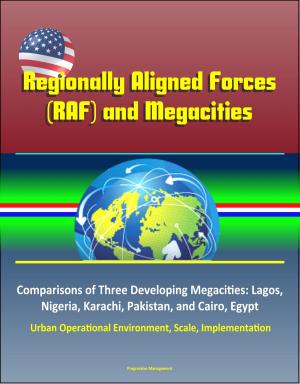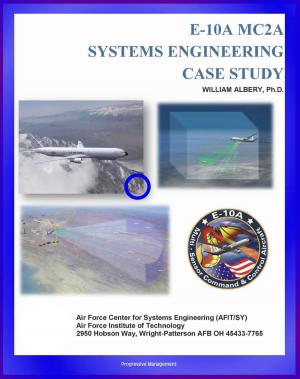Geothermal Technologies Market Report: Department of Energy Report on the Status of Geothermal Power, Investment, American Activity, Leasing and Permitting, Employment and Economic Benefits
Nonfiction, Science & Nature, Science, Physics, Energy| Author: | Progressive Management | ISBN: | 9781465992956 |
| Publisher: | Progressive Management | Publication: | March 7, 2012 |
| Imprint: | Smashwords Edition | Language: | English |
| Author: | Progressive Management |
| ISBN: | 9781465992956 |
| Publisher: | Progressive Management |
| Publication: | March 7, 2012 |
| Imprint: | Smashwords Edition |
| Language: | English |
This Department of Energy (DOE) report on the market for geothermal power technologies has been converted for accurate flowing-text ebook format reproduction. While geothermal energy technology has been in development in the United States for over 100 years, national interest in geothermal recently gained momentum as the result of new analysis that suggests massive electricity producing potential. The geothermal industry has also seen unprecedented investment growth following the transition to a new administration and its response to the economic climate through the American Recovery and Reinvestment Act of 2009 (the Recovery Act). While it tends to have a lower profile among the nation's renewable energy resources, geothermal is currently in the midst of a renaissance. In such a rapidly changing market, this report bears particular significance.
Geothermal energy technologies can be broken into four major categories: conventional hydrothermal, low-temperature, EGS, and direct use, including geothermal heat pumps (GHPs). The first three categories generate electricity, while the fourth is used primarily for heating and cooling and hot water production. This report will consider electricity generation technologies separately from direct use technologies due to differences in technology maturity and market characteristics.
This report describes market-wide trends for the geothermal industry throughout 2008 and the beginning of 2009. It begins with an overview of the GTP's involvement with the geothermal industry and recent investment trends for electric generation technologies. The report next describes the current state of geothermal power generation and activity within the United States, costs associated with development, financing trends, an analysis of the levelized cost of energy (LCOE), and a look at the current policy environment. The report also highlights trends regarding direct use of geothermal energy, including GHPs.** The final sections of the report focus on international perspectives, employment and economic benefits from geothermal energy development, and potential incentives in pending national legislation.
Contents: Investment * State of Power Generation & Current Activity in the U.S. * Cost of Development, Operation and Maintenance * National Policy, Geothermal Leasing and Permitting * Direct-Use and GHPs * International Activities * Employment and Economic Benefits of Geothermal Power * Looking Ahead - 2009 and Beyond
Geothermal energy is a domestic energy source. Clearly, geothermal energy can greatly contribute to the nation's energy mix. It is clean and available 24 hours a day. The United States has an estimated 2800 MW of geothermal installed capacity; worldwide, the figure is 8000 MW. The U.S. Geological Survey estimated in 1979 that the hydrothermal geothermal power potential in the United States was approximately 23,000 MW. In addition, thousands of installations are using geothermal energy for agriculture, aquaculture, district heating and cooling, and other direct uses. This estimate of geothermal potential could be even higher. Using geothermal energy reduces our dependence on imported fuels, creates jobs in the United States, and more favorably balances the U.S. global trading position. Geothermal energy has environmental benefits. Electricity produced from geothermal resources in the United States prevents the emission of 22 million tons of carbon dioxide, 200,000 tons of sulfur dioxide, 80,000 tons of nitrogen oxides, and 110,000 tons of particulate matter every year compared to conventional coal-fired power plants. A geothermal binary power plant, operating with a closed system, emits virtually nothing to the atmosphere. Technologies have been developed to recycle minerals contained in geothermal fluid so that little or no disposal or emissions occur.
This Department of Energy (DOE) report on the market for geothermal power technologies has been converted for accurate flowing-text ebook format reproduction. While geothermal energy technology has been in development in the United States for over 100 years, national interest in geothermal recently gained momentum as the result of new analysis that suggests massive electricity producing potential. The geothermal industry has also seen unprecedented investment growth following the transition to a new administration and its response to the economic climate through the American Recovery and Reinvestment Act of 2009 (the Recovery Act). While it tends to have a lower profile among the nation's renewable energy resources, geothermal is currently in the midst of a renaissance. In such a rapidly changing market, this report bears particular significance.
Geothermal energy technologies can be broken into four major categories: conventional hydrothermal, low-temperature, EGS, and direct use, including geothermal heat pumps (GHPs). The first three categories generate electricity, while the fourth is used primarily for heating and cooling and hot water production. This report will consider electricity generation technologies separately from direct use technologies due to differences in technology maturity and market characteristics.
This report describes market-wide trends for the geothermal industry throughout 2008 and the beginning of 2009. It begins with an overview of the GTP's involvement with the geothermal industry and recent investment trends for electric generation technologies. The report next describes the current state of geothermal power generation and activity within the United States, costs associated with development, financing trends, an analysis of the levelized cost of energy (LCOE), and a look at the current policy environment. The report also highlights trends regarding direct use of geothermal energy, including GHPs.** The final sections of the report focus on international perspectives, employment and economic benefits from geothermal energy development, and potential incentives in pending national legislation.
Contents: Investment * State of Power Generation & Current Activity in the U.S. * Cost of Development, Operation and Maintenance * National Policy, Geothermal Leasing and Permitting * Direct-Use and GHPs * International Activities * Employment and Economic Benefits of Geothermal Power * Looking Ahead - 2009 and Beyond
Geothermal energy is a domestic energy source. Clearly, geothermal energy can greatly contribute to the nation's energy mix. It is clean and available 24 hours a day. The United States has an estimated 2800 MW of geothermal installed capacity; worldwide, the figure is 8000 MW. The U.S. Geological Survey estimated in 1979 that the hydrothermal geothermal power potential in the United States was approximately 23,000 MW. In addition, thousands of installations are using geothermal energy for agriculture, aquaculture, district heating and cooling, and other direct uses. This estimate of geothermal potential could be even higher. Using geothermal energy reduces our dependence on imported fuels, creates jobs in the United States, and more favorably balances the U.S. global trading position. Geothermal energy has environmental benefits. Electricity produced from geothermal resources in the United States prevents the emission of 22 million tons of carbon dioxide, 200,000 tons of sulfur dioxide, 80,000 tons of nitrogen oxides, and 110,000 tons of particulate matter every year compared to conventional coal-fired power plants. A geothermal binary power plant, operating with a closed system, emits virtually nothing to the atmosphere. Technologies have been developed to recycle minerals contained in geothermal fluid so that little or no disposal or emissions occur.















